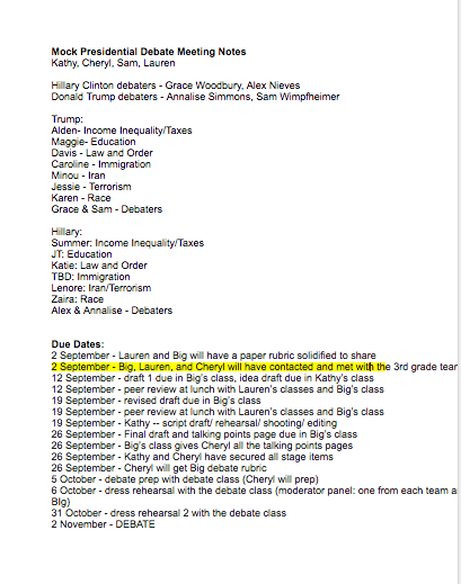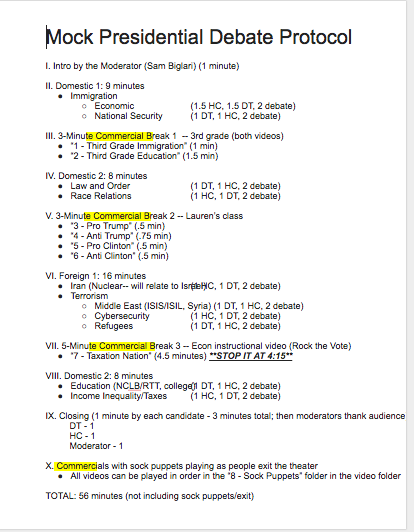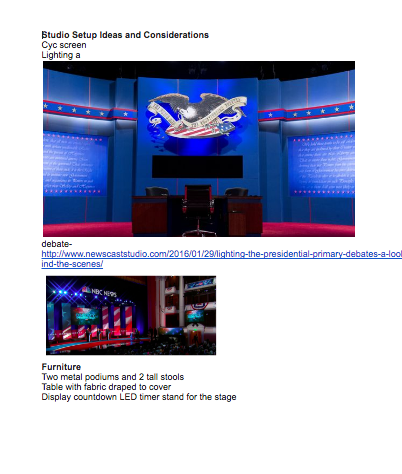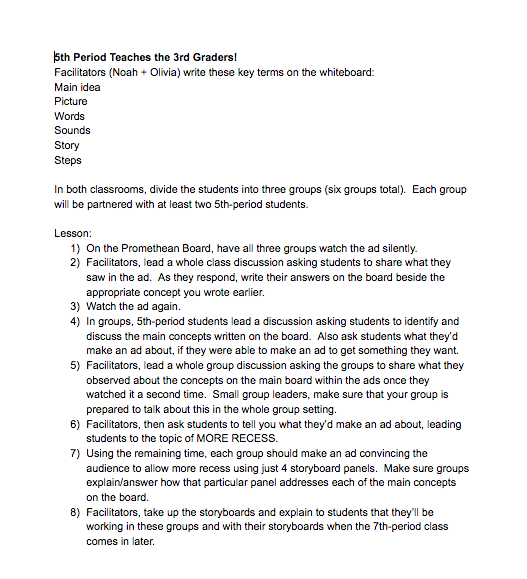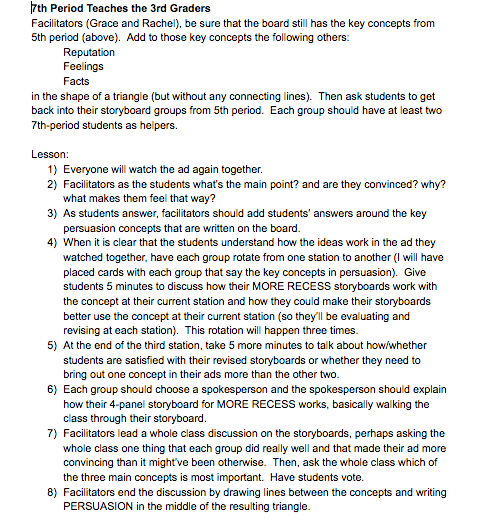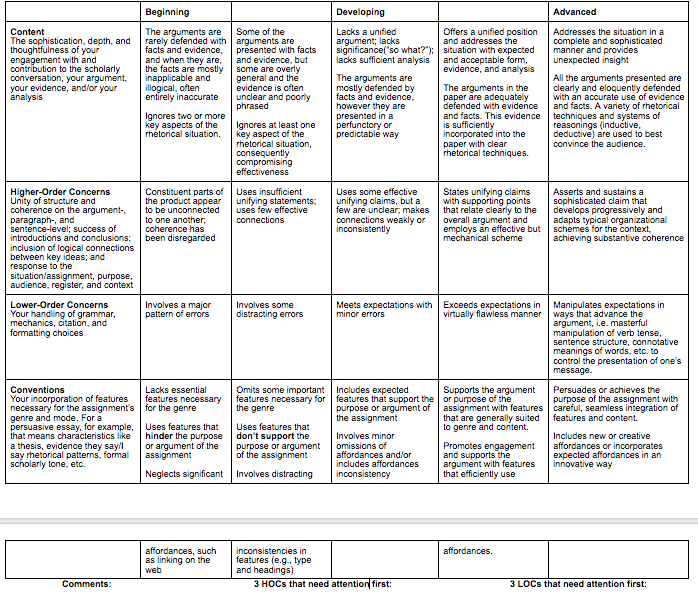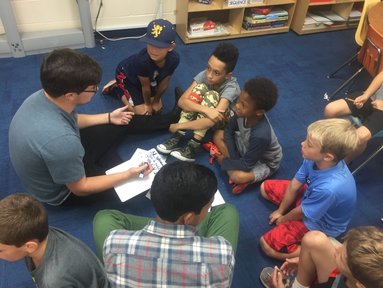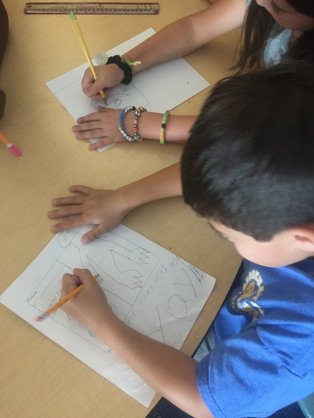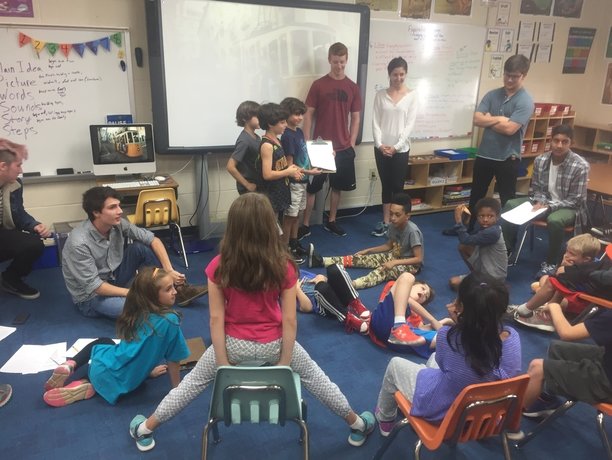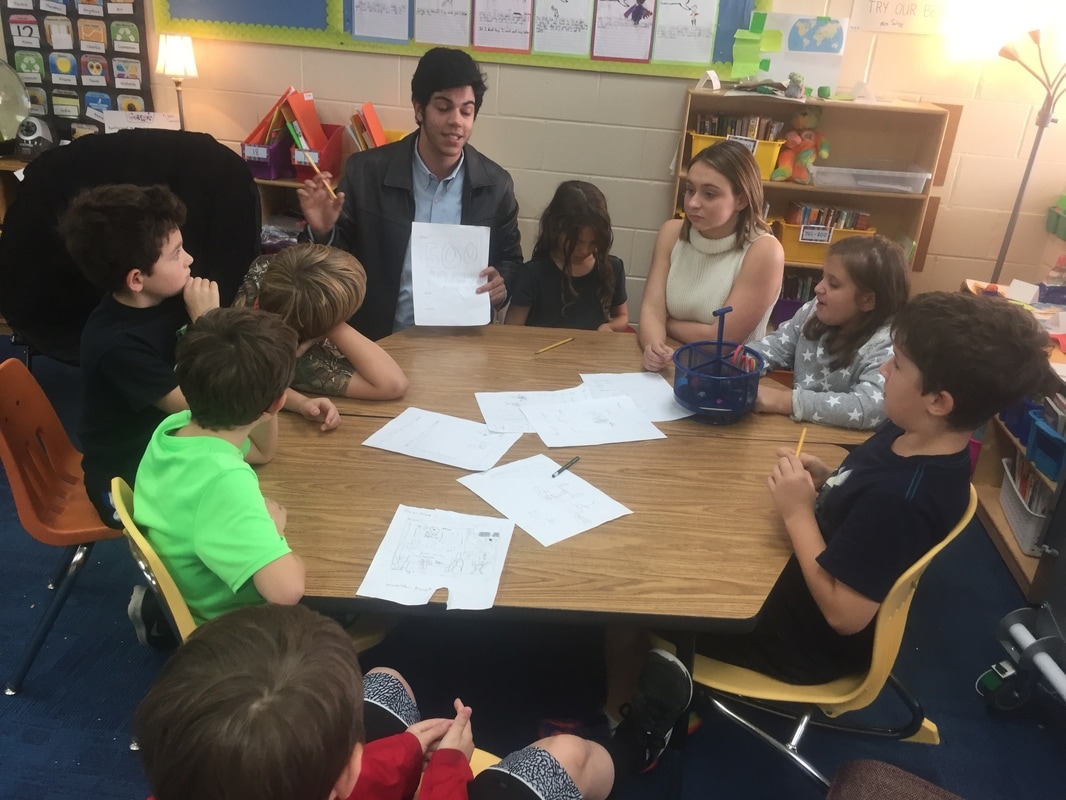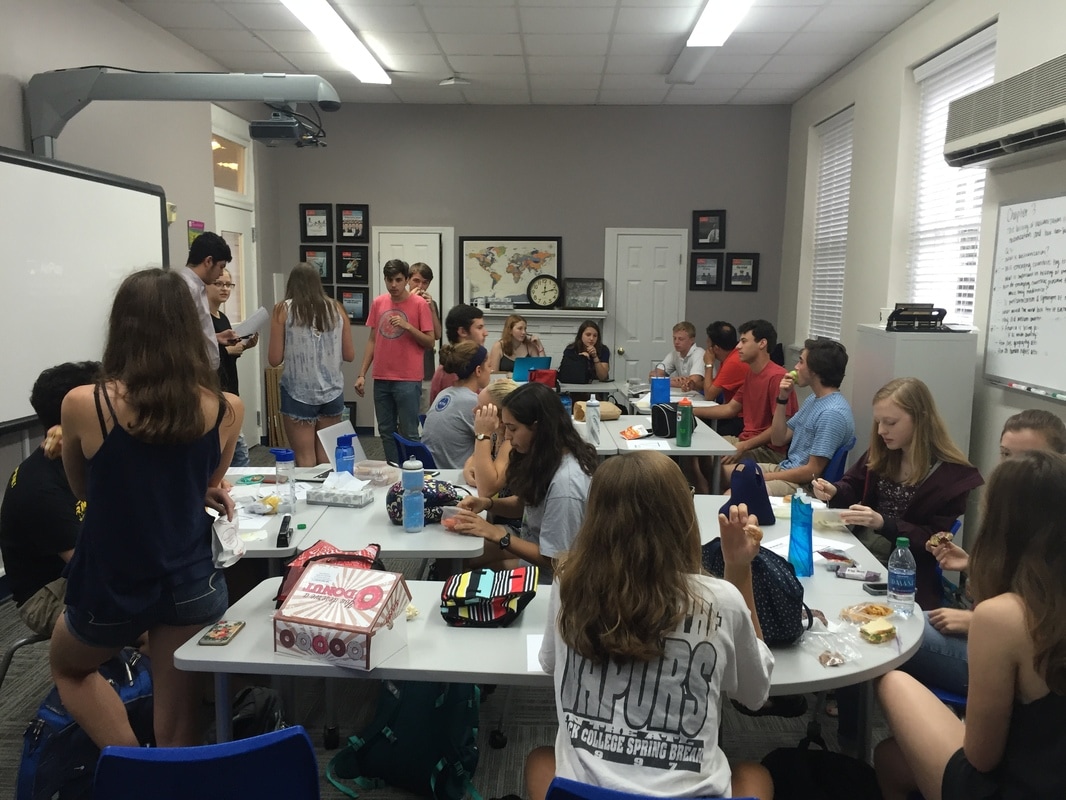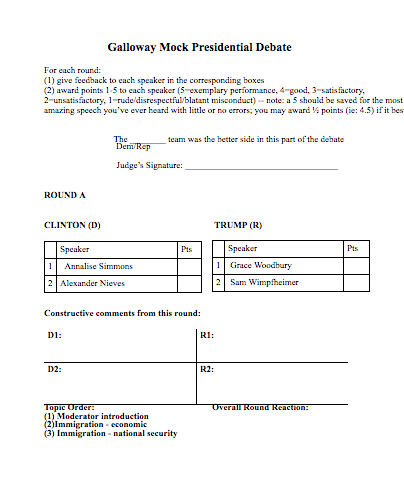PROCESS
The 2016 Galloway Mock Presidential Debate was a semester-long, multi-tiered, multi-stranded, scaffolded, simulated debate that built on different areas of student expertise gained in courses across Early Learning, Middle Learning, and Upper Learning. On 2 November 2016, Galloway hosted a student-produced and student-presented mock presidential debate featuring Annalise Simons and Alexander Nieves (Team Clinton) and Sam Wimpfheimer and Grace Woodbery (Team Trump). In the months leading up to the Mock Debate itself, these student-candidates worked with research teams comprised of fellow AP Comparative Government students to gather information on their candidates' positions and with the AP Literature students to present those positions in rhetorically-focused, persuasive position papers. Students in my AP Literature classes taught two lessons to the AP Comparative students on rhetoric and persuasive writing as the Comparative students completed their position papers in preparation for the debate. AP Literature students also taught lessons to the Comparative classes on peer review and served as peers in two peer review sessions focused on these position papers. Students enrolled in my senior seminar focused on Politics of Theater/Theater of Politics partnered with Anne Kostensky's and Dori Handel's third-grade classes to create political ads to be shown during the debate. The Politics of Theater/Theater of Politics students and one class of AP Lit students taught lessons in rhetoric, persuasion, and storyboarding to 3rd-grade students taught by Anne Kostensky and Dori Handel. Using this knowledge, the 3rd grade classes also constructed commercials for the other intermission. Middle Learning and Upper Learning students enrolled in Kathy Shields's filmmaking class produced the 3rd graders' intermission commercials and provided a livestream and additional technical support during the debate. Peter Emmons's Economics students also created an ad on economic issues at the center of the election. Cheryl Despathy's Debate students coached Comparative students on the debate process. Theater students involved with tech crew worked on sound and lighting for the event. Finally, Megan Cramer, Upper Learning Theater teacher, provided coaching on stage presence.
Step 2:
Once the school year began, the three of us met weekly and used backwards design to determine the scaffolding necessary, the different student populations that might want to be involved, etc. We also spent time planning the logistics of the debate itself, including the debate protocol, staging requirements, technological needs, and other necessities.
Once the school year began, the three of us met weekly and used backwards design to determine the scaffolding necessary, the different student populations that might want to be involved, etc. We also spent time planning the logistics of the debate itself, including the debate protocol, staging requirements, technological needs, and other necessities.
Step 3:
Students within the Politics of Theater/Theater of Politics seminar class divided themselves up into four different teams and selected key concepts to explore from both parties' positions and arising from the topics that the AP Comparative Government class chose to include in their position papers. Together with one section of AP Lit, they also discussed how they should go about structuring their lessons for the third graders on persuasion and storyboarding
Students within the Politics of Theater/Theater of Politics seminar class divided themselves up into four different teams and selected key concepts to explore from both parties' positions and arising from the topics that the AP Comparative Government class chose to include in their position papers. Together with one section of AP Lit, they also discussed how they should go about structuring their lessons for the third graders on persuasion and storyboarding
At the same time, students in both sections of AP Lit began to brainstorm ways they could instruct and support the AP Comparative Government class as they began to draft their position papers. They discussed the rhetorical skills the Comparative students would need to hone in order to complete their position papers, considered the types of peer review that would be most beneficial, revised peer review guidelines, decided upon the terms of assessment, and reconstructed an appropriate rubric for the Comparative students' written components.
And AP Lit students taught the Comparative class about rhetorical techniques and led them through peer reviews.
|
Step 5:
After teaching the third graders, the Senior Seminar students made their own ads, one example below. |
|
And the third graders, using the storyboard templates that the Senior Seminar and 7th-period AP Lit students made for them, created their own PSAs.
|
Step 7:
Based on the peer review sessions and meetings on stage presence and debate protocol with Cheryl and Megan, the Comparative students completed revisions of their position papers and prepped for the actual debate, including completing a dress rehearsal. We also organized a panel of judges to evaluate the debaters on the day of the event, including Suzanna Jemsby and Peter Aman. |
Step 8:
On the day of the debate, digital film production students established a live feed of the debate, third grade students watched from a satellite location, and the UL student body attended the event live.
On the day of the debate, digital film production students established a live feed of the debate, third grade students watched from a satellite location, and the UL student body attended the event live.
